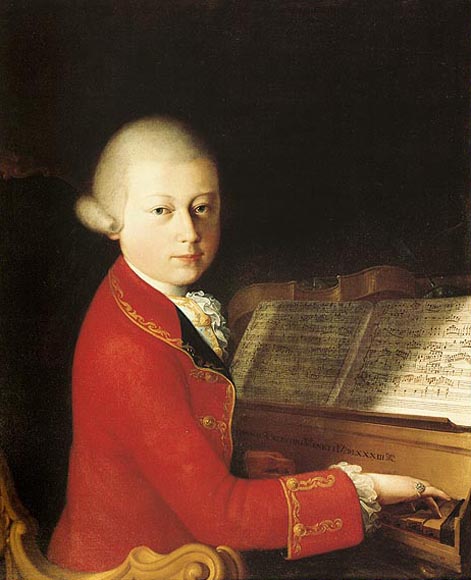 C.P.E Bach composed music that was at the forefront in the development of music that strayed away from the more formal Baroque style of his father J.S. Bach. He helped develop sonata form (a compositional method as much as a form) that was refined by Haydn and Mozart and perfected by Beethoven. His influence on those three composers also led to more expressive music. Bach was also a proponent of empfindsamer Stil, a rather imposing German phrase that translates as 'sensitive style.' Some of the features of empfindsamer Stil are:
C.P.E Bach composed music that was at the forefront in the development of music that strayed away from the more formal Baroque style of his father J.S. Bach. He helped develop sonata form (a compositional method as much as a form) that was refined by Haydn and Mozart and perfected by Beethoven. His influence on those three composers also led to more expressive music. Bach was also a proponent of empfindsamer Stil, a rather imposing German phrase that translates as 'sensitive style.' Some of the features of empfindsamer Stil are:- Music was to appeal to the emotions by the performer being emotionally involved
- Subtle nuance and shading
- Expression of a variety of sentiments, sometimes in rapid succession
- A singing, expressive style
- Short phrases
- Frequently changing dynamic and rhythmic patterns
C.P.E Bach composed copiously in all of the musical forms of his day, including symphonies. It is unclear how many symphonies C.P.E. Bach composed, but the number that are definitely known to musicologists is 18. His first symphonies date to about 1741 and are for strings and continuo. His symphonic output spans over thirty years and his last known works in the form date from 1775-1776. This set of four symphonies was written for an unknown patron and are written for a larger ensemble than the early symphonies. Translated from German, the full tile of this set is named Orchestral Symphonies with Twelve Obbligato Parts. Besides the usual strings and harpsichord continuo, the symphonies call for pairs of horns, flutes, oboes and a single bassoon. The first symphony in this set is the subject of this article.
All of Bach's known symphonies follow a three movement plan of fast-slow-fast, and all have a part for continuo but it plays a much smaller role in the later symphonies.
I. Allegro di molto - The symphony opens with the 1st violins playing the tonic note of D with the first measure being a whole note and then alternating D's in syncopation in a procession of shorter notes while the rest of the strings play arpeggiated D chords until all the strings play D's. The 1st violins repeat the pattern but this time play an F# while the rest of the strings play arpeggiated B minor chords. The pattern repeats, 1st violins play a B while arpeggiated G chords are played by the rest of the strings. The 1st violins then play a C natural and the winds make their entrance and the full orchestra finds its way back to G major. The instruments take their turn in the music that leads up to an interlude for the woodwinds. The strings then take up an agitated theme that is punctuated by the woodwinds. Another theme appears that is just as agitated in a major key, which leads to the end of the exposition. Bach wrote no repeat for the exposition, so the development begins straight away. The material from the exposition is commented on and developed. The recapitulation then begins and as the movement ends, it gently segues into the next movement.
II. Largo - Bach asks the continuo to be silent in this movement, a slow and gentle tune. The calm mood doesn't last long, as this movement leads directly to the finale.
III. Presto - A rhythmic dance-like movement that Bach repeats. After the repeat there is a short coda that wraps up the symphony.








